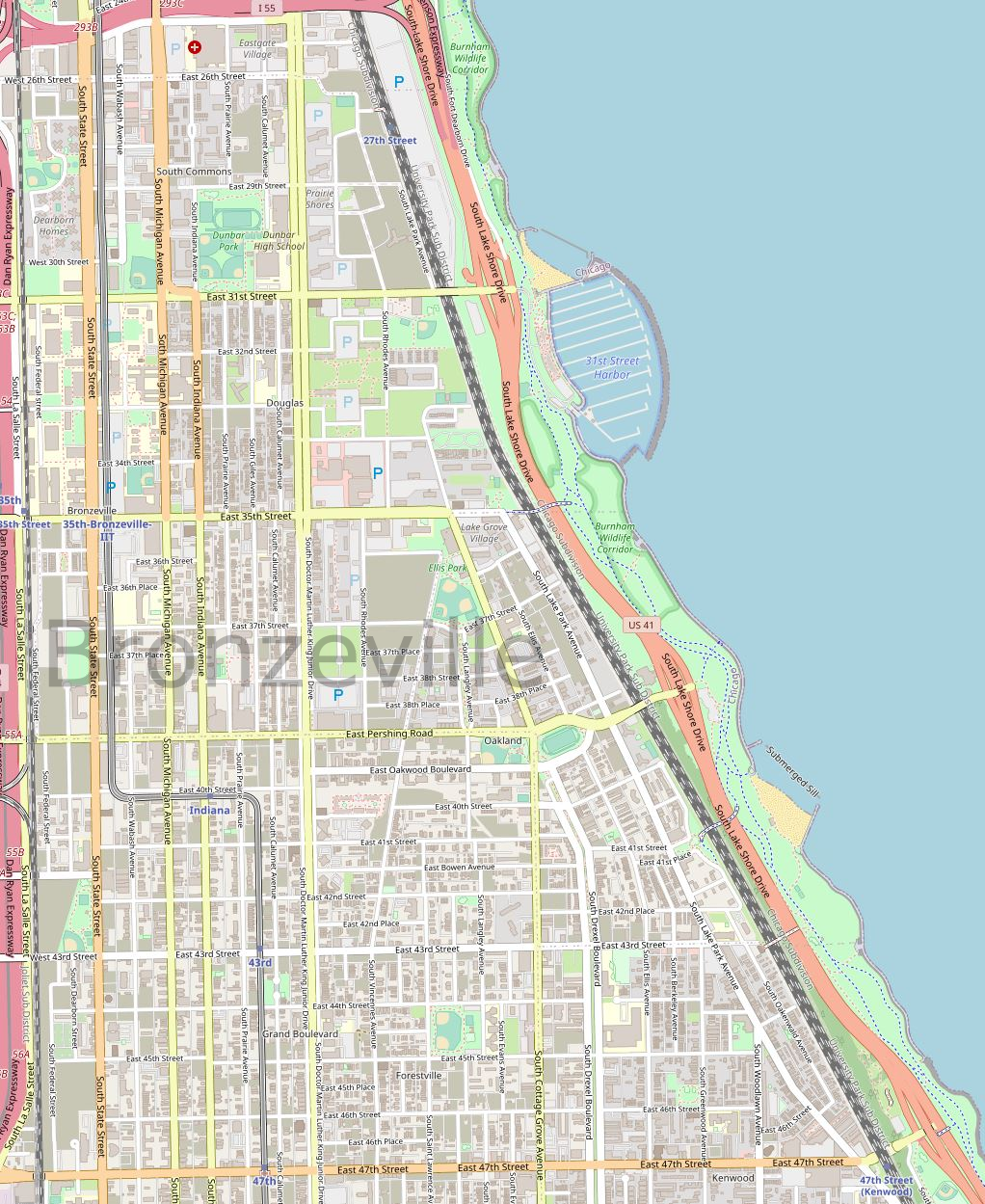


Bronzeville was the heart of the African American metropolis in 1920’s Chicago and an influential part of Chicago’s African American history. The community, which sits on the site of Camp Douglas (one of the norths largest Confederate prison camps), was flooded with African Americans fleeing and racism in the south during the Great Migration. During that period, Chicago’s higher paying jobs meant that people of color had disposable income for the first time, creating a thriving black metropolis. Bronzeville grew up around State Street between 31st and 39th, and Grand Boulevard, now called Martin Luther King Jr. Drive and this newfound population center meant that businesses were started up, creating a second cultural, economic and social hub on the South Side of Chicago. This diverse African American center was known as the Black Metropolis.
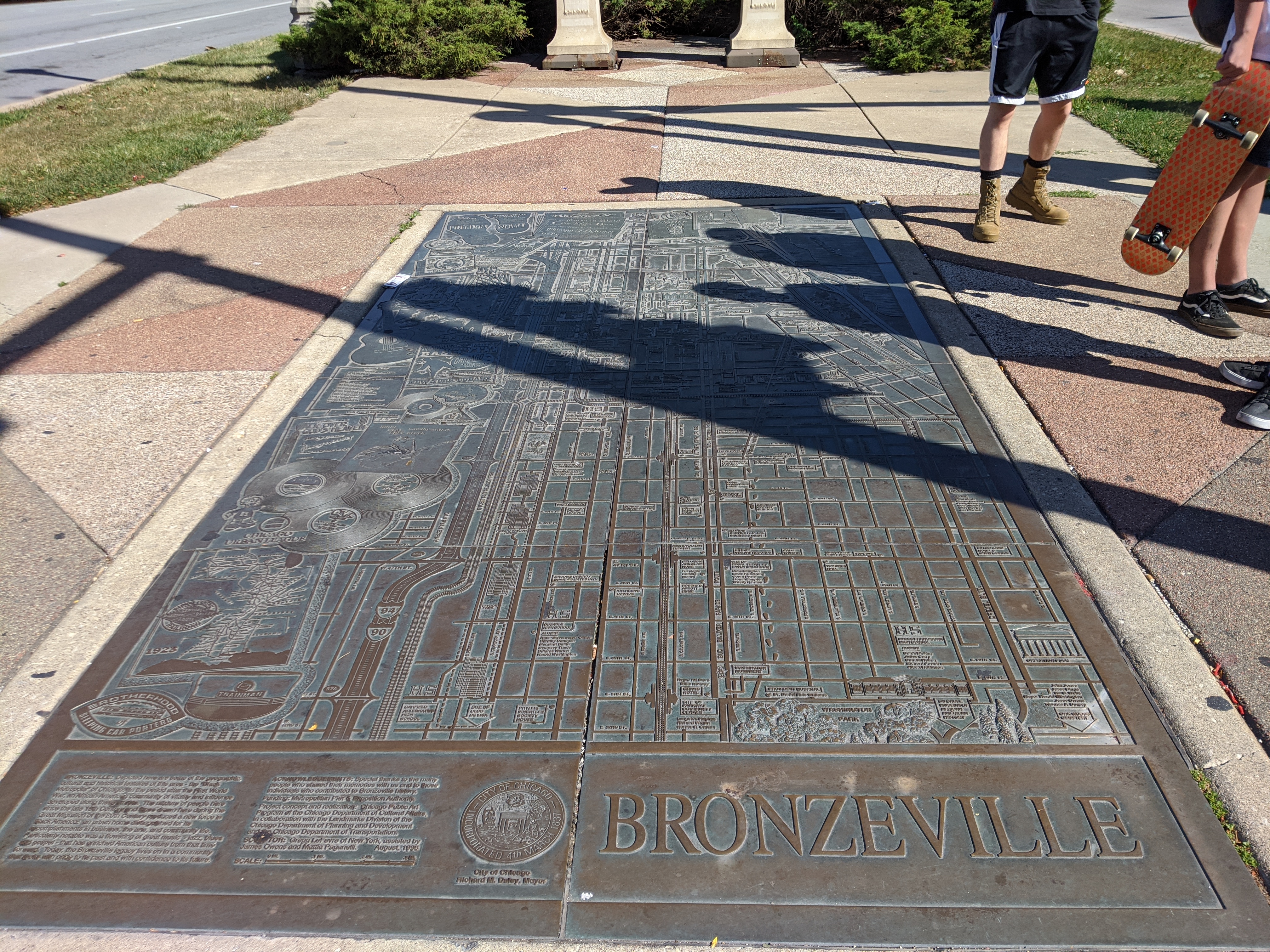
We started our tour at 35th and King Drive, which is part of Chicago’s extensive network of boulevards. At this junction lies many key landmarks and cultural icons, including our first landmark, the Bronze Map. The Bronze Map depicts the landmarks of the history from the Chicago Defender and Bee to the area’s rich history in Jazz, Blues and Gospel music – all icons of the achievements of Chicago’s African American population. The maps central location helps guide tourists and locals alike through the history of the area and provided inspiration for some of the locations we visited during the tour.
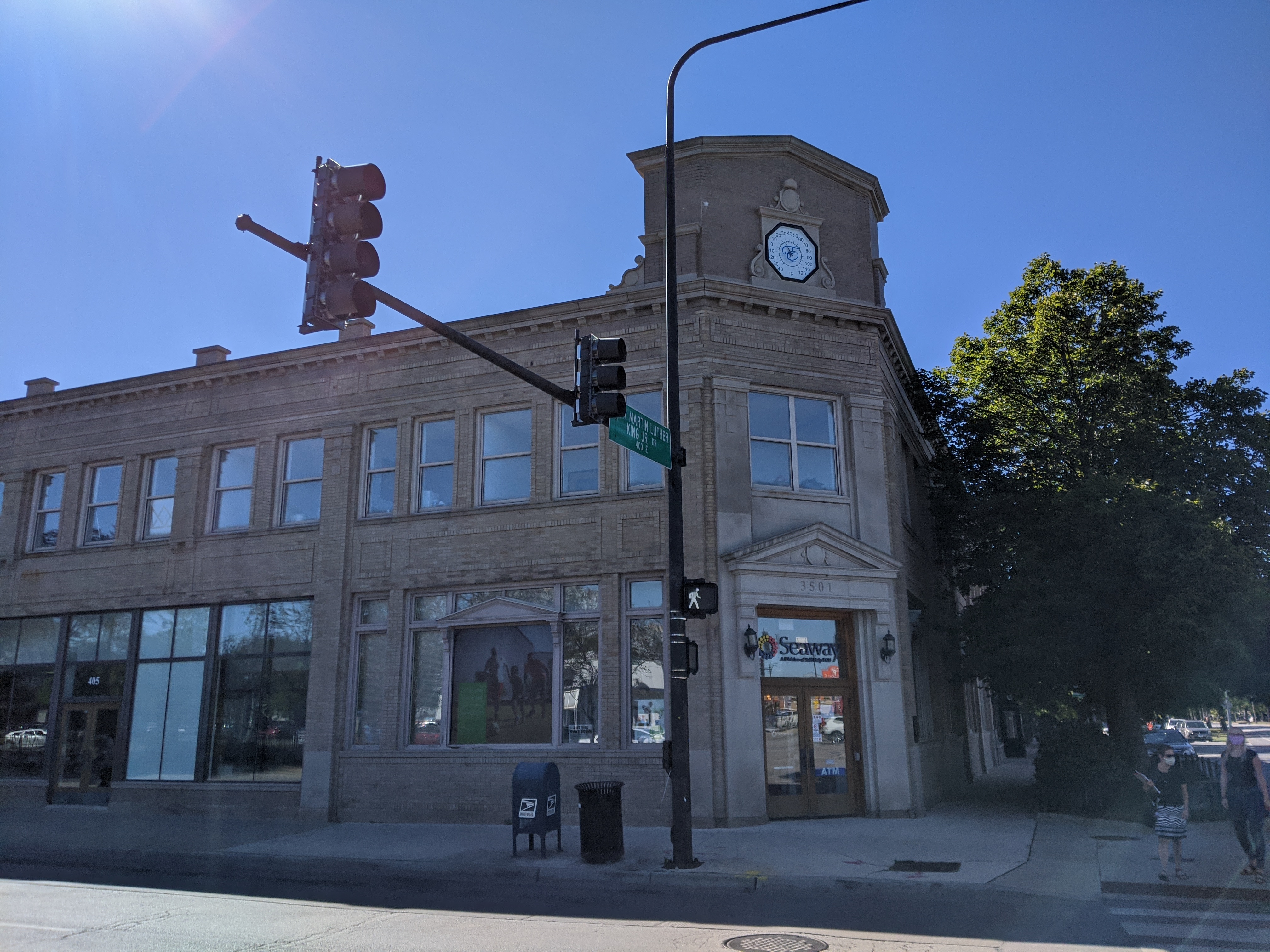
Just across the road from the Bronze map is the Supreme Life Building. Originally called the Liberty Life Building, the owner and founder of the insurance company, Frank L. Gillespie, renamed the company. He decided to call it the Supreme Life Insurance Company, and it was unique as the first insurance company to serve people of color. Established in the 20th century at a time when white company’s rarely offered insurance to them, it offered people of color the same protections as white people. Gillespie worked hard to hire and train black agents for the company. The building left in his legacy was nearly demolished in the 90’s before being bought by the black metropolis and tourism council that also owns other sites of historical importance in Bronzeville, including Unity Hall and the Chicago Defender Building.
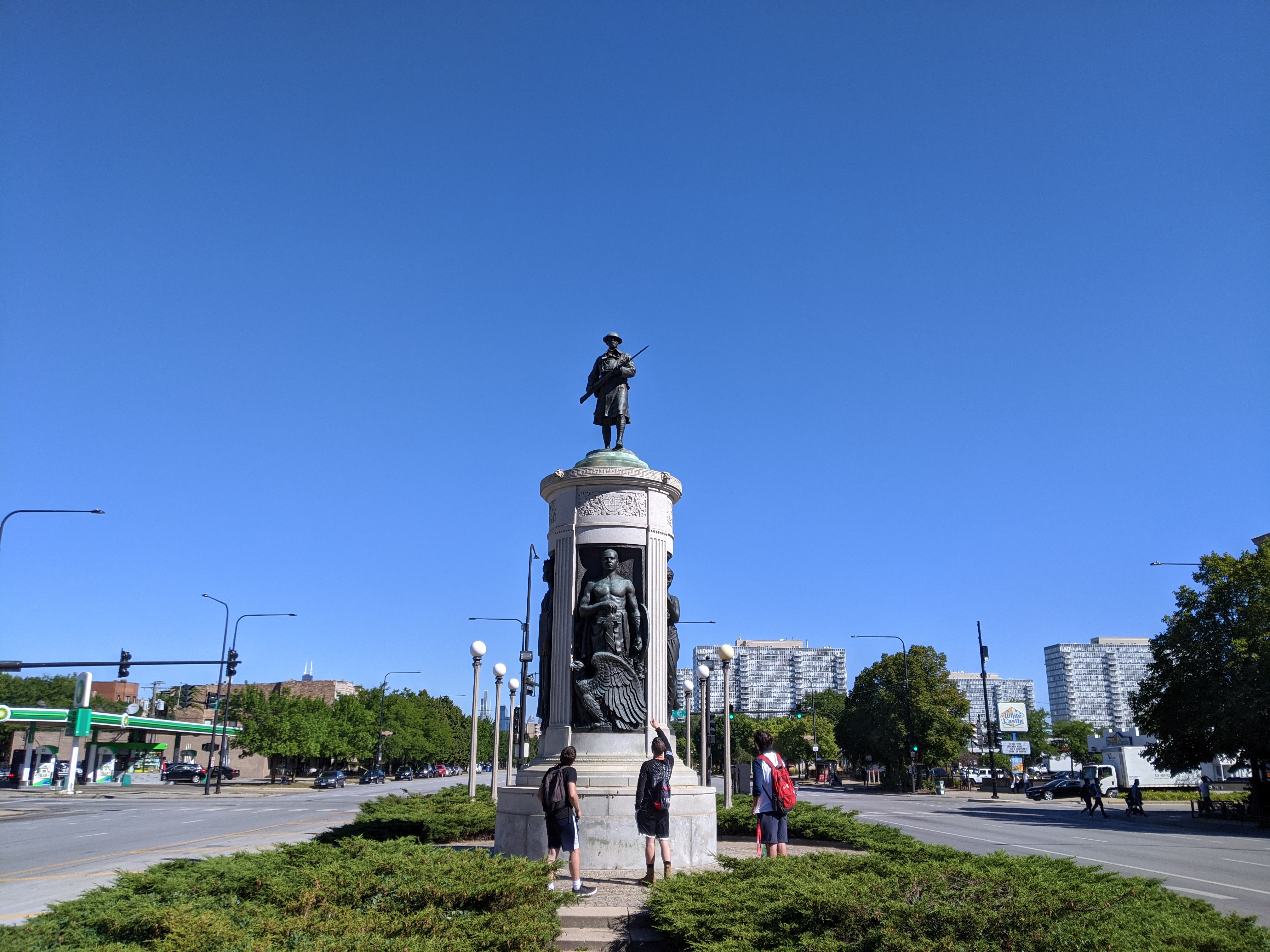
Facing south in front of the Supreme Life building is the Victory Monument. Originally produced in 1927, the solider on the top of the monument was added in 1936. The monument acts as a memorial to the 8th regiment of the national guard, the first all-black regiment who are based just west on 35th Street - more on that in a minute. The 8th regiment fought in World War 1 (WWI) in France as the 370th Infantry of the 93rd division, and were notable for being the last regiment to pursue the Germans through France in WWI. The 3 panels at the base represent the victory in WWI, the battles the regiment fought and on the front a member of the regiment with an American eagle.
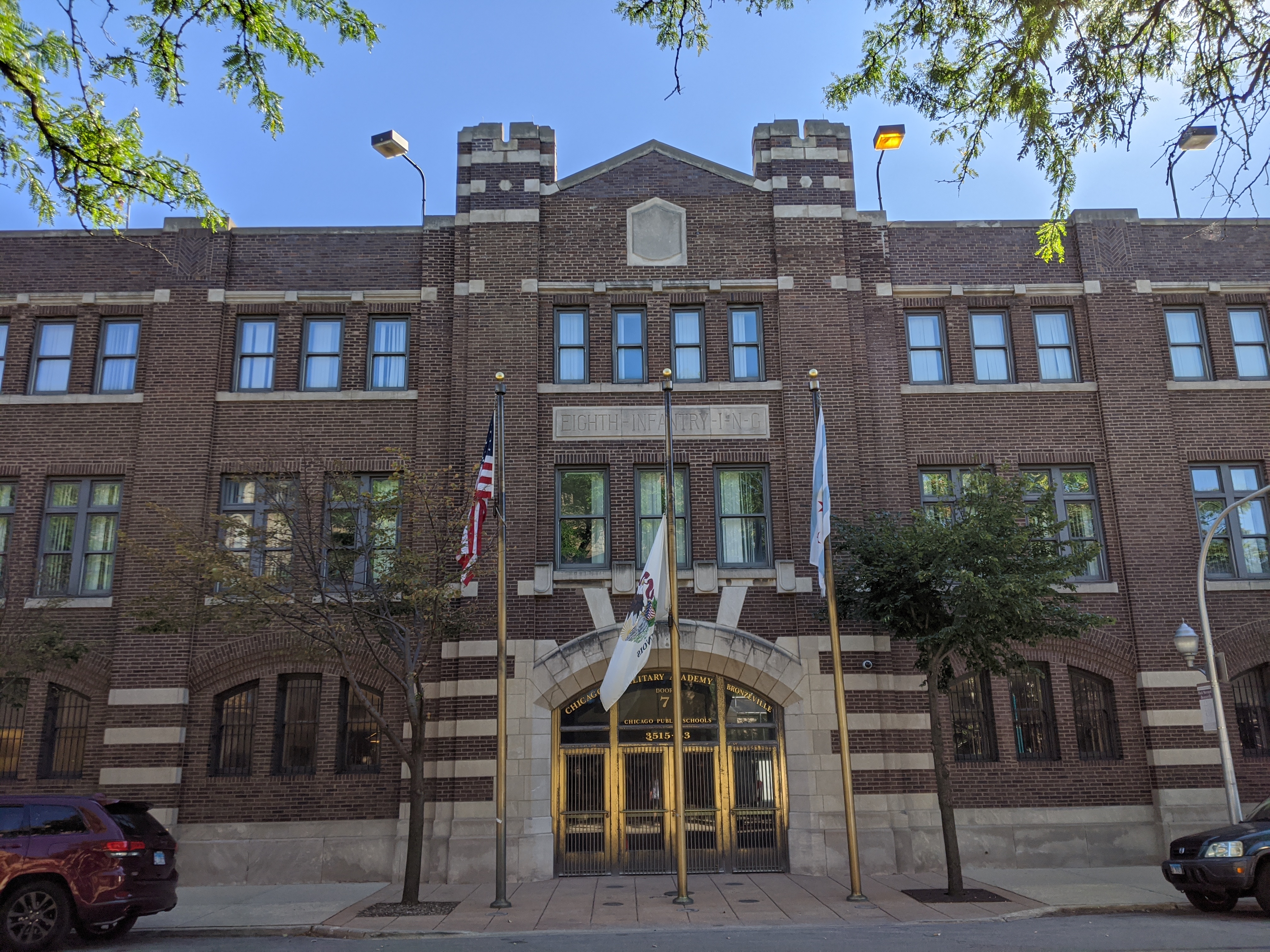

Nearby is the regiments armory – the 8th regiments armory was used by the regiment and subsequent military regiments until the mid-1950s. The armory itself was built in 1914 at the break of war in Europe. The 8th regiment played a part in WWII as well, as the 184th artillery armory and the regiment itself is now based elsewhere as the 178th infantry of the Illinois National Guard. The building still houses the military today, currently acting as the Chicago Military Academy.
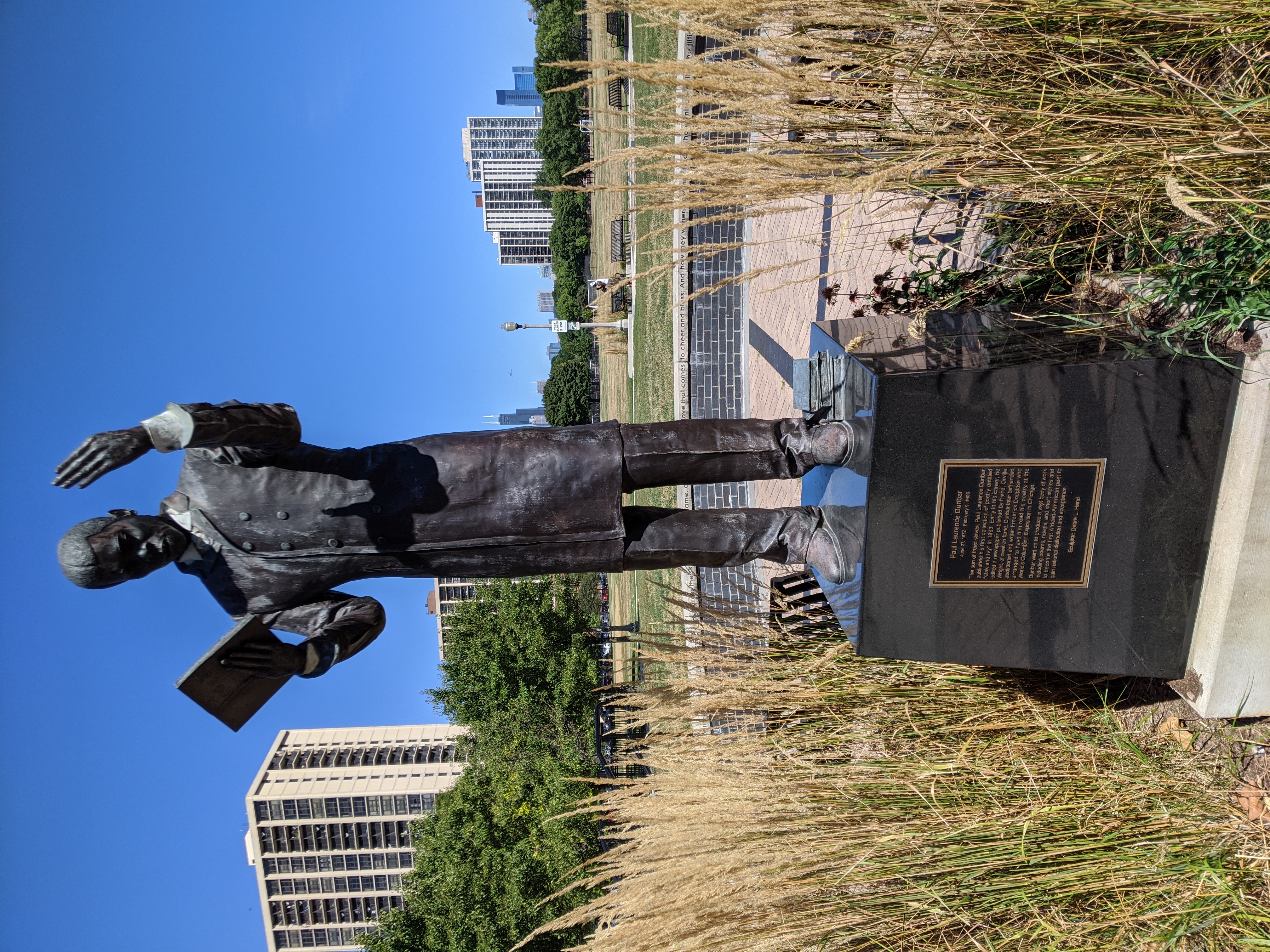
On our tour of Bronzeville, we next headed north 2 blocks to 31st street where we saw the statue of Paul Lawrence Dunbar, located (appropriately) in Dunbar park. Paul Dunbar is known as one of the first great African American poets, and like many in Bronzeville, fled the south to make home in Dayton, Ohio and as his career progressed (producing work such as ‘Oak and Ivy’) he befriended Fredrick Douglass, who managed to get Dunbar to speak at the Worlds Columbian Exposition in Chicago. From there his career grew, and he became one of the first notable poets of color, spreading to nationwide acclaim. He now has many high schools named after him, including Dunbar Vocational High in Bronzeville.
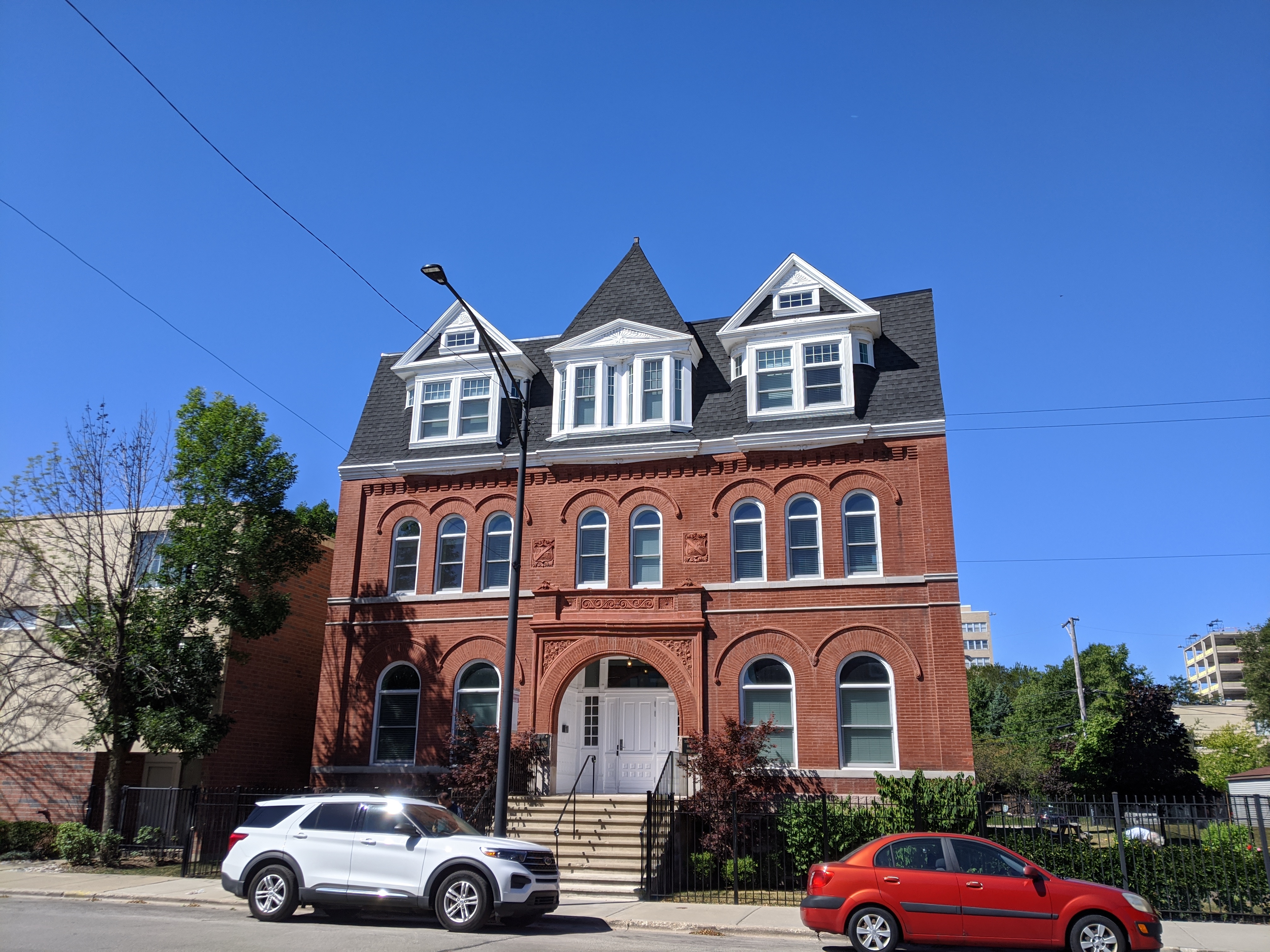
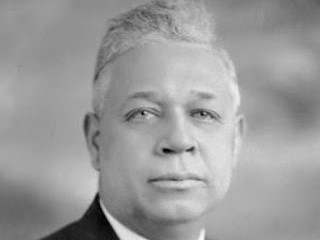
Just off 31st street on Indiana sits Unity Hall. Located in what is now a quiet part of Bronzeville, Unity Hall was designed by L. B. Dixon as a Jewish social club (called the Lakeside Club) for young men in 1887 due to the high attendance of the original social club at 13th Street. The building was renamed to Unity hall in 1917 when it became the headquarters of the People’s Movement Club. This club, located in what was by this point the heart of the Black Metropolis, was headed by influential figure Oscar Stanton DePriest, who became the first African American to be elected to congress from the northern United States, and was one of the most well organized political groups of the Black Metropolis. The building was declared a Chicago landmark as of 1998, but in 2012 was nearly demolished due to disrepair; the building is now under renovation for student accommodation.

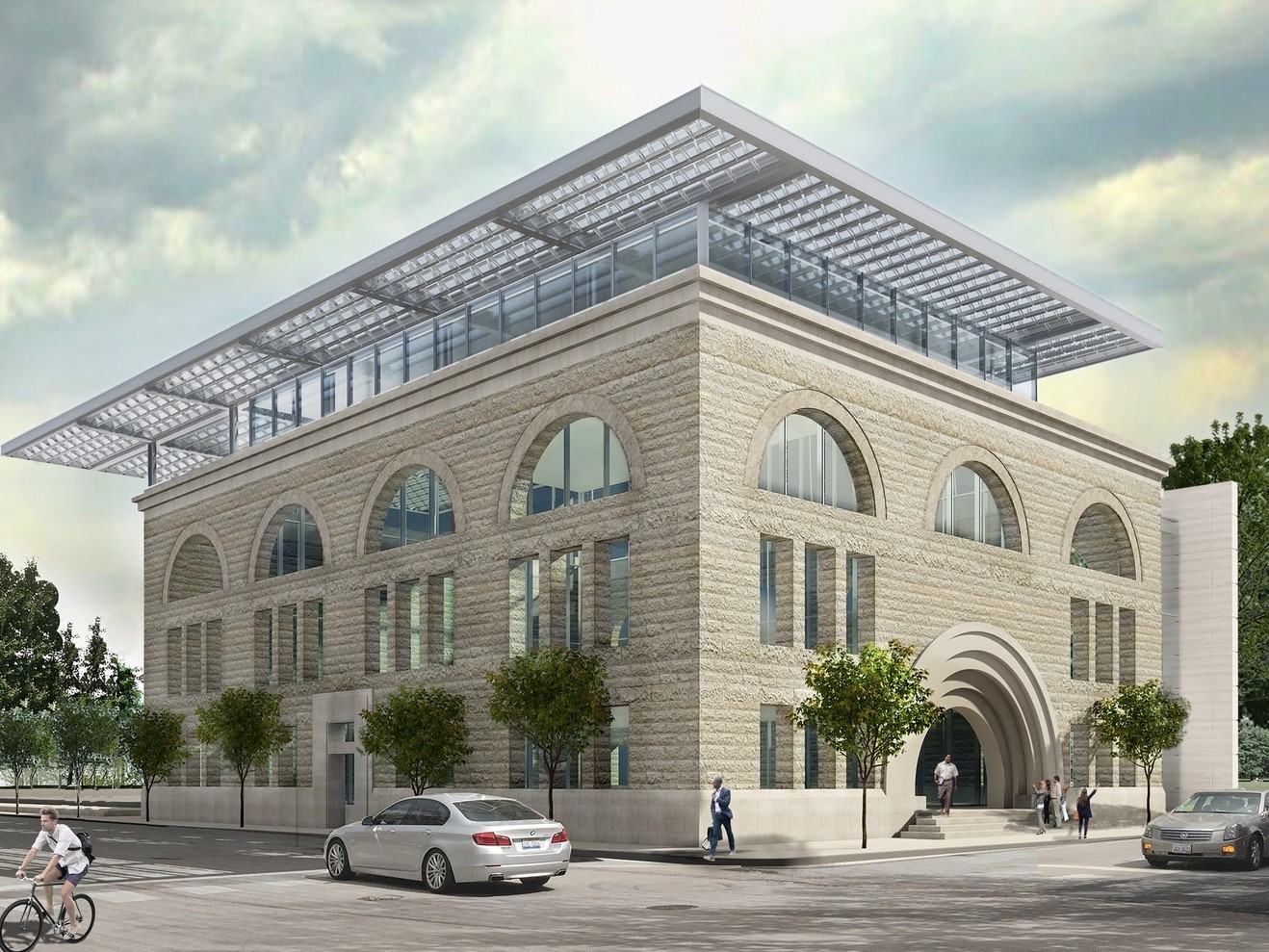
Just south on Indiana is the shell of the original Pilgrim Baptist Church, held up by scaffolding. Like so many buildings in northern Bronzeville, it was originally built for the Jewish faith as a synagogue, before being taken over as a Baptist church in 1922. This building plays a very significant part in American history, being home to the congregation credited with the creation of gospel music sometime in the 1930’s by Thomas A. Dorsey, the ‘father of gospel music’. The church also hosted the funeral of the first African American heavyweight boxing champion Jack Johnson, and several sermons were delivered during the civil rights movement by Martin Luther King Jr. The building burnt down in 2006 during restoration and only the front 2 walls survived. The building is currently being braced while restorations are underway to turn the building into the nations first museum of Gospel music.
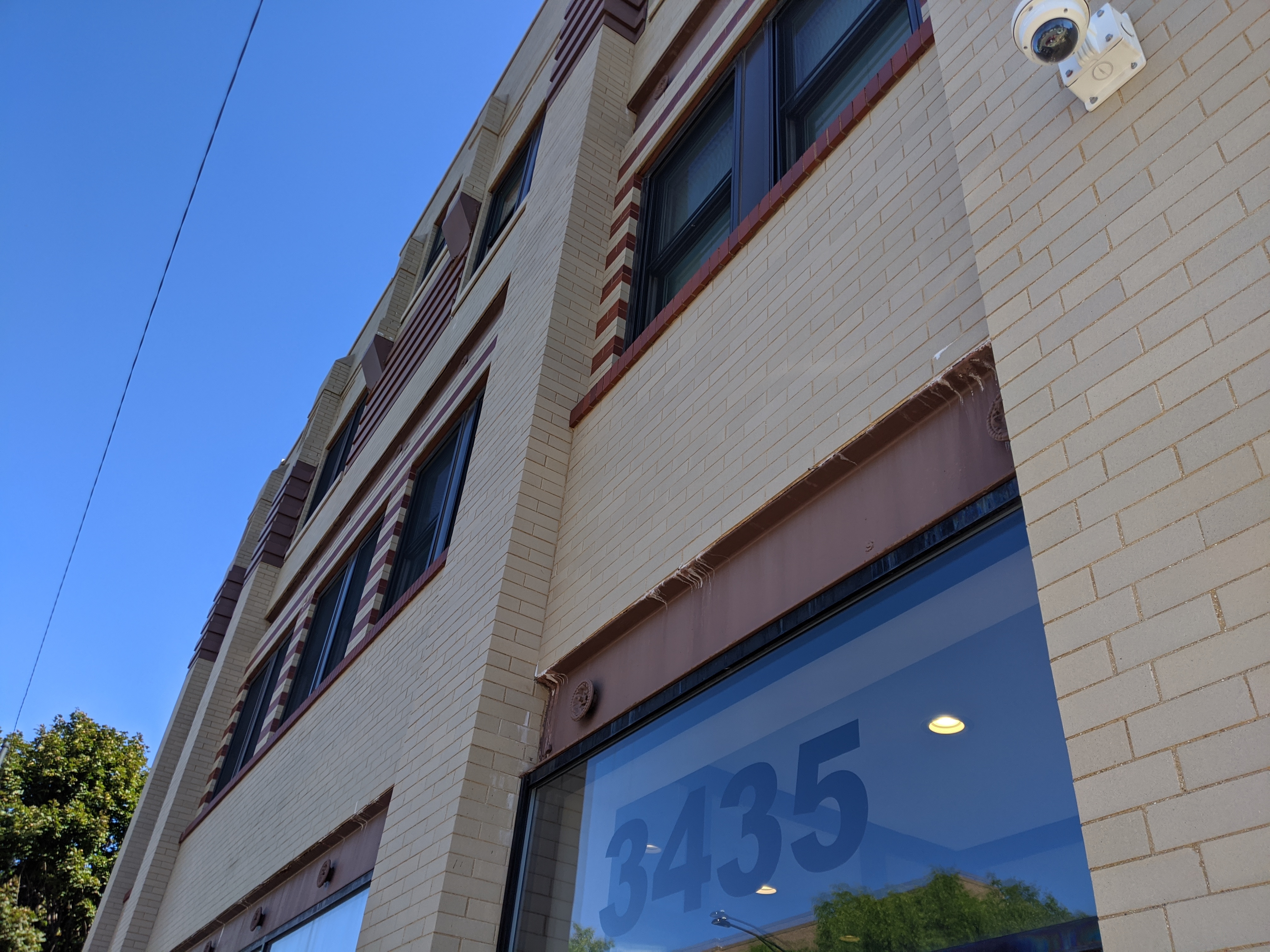
The Chicago Defender was produced at the Chicago Defender Building on 35th and Indiana from the 1920’s till the mid 1960’s. The newspaper itself was founded by Robert S. Abbot in 1905 and was one of the most influential newspapers in the era of the Great Migration and of the Black Metropolis. The newspaper started to take off in 1915 when African Americans started migrating north to escape oppression in the south. The paper was at first smuggled into the south by porters for the Pullman Company, often against the laws of the southern states there where destined for. The paper was also one of the first newspapers to omit derogatory terms for people of color from its printing and was one of the main catalysts behind the Great Migration. Some of papers most prominent contributors include Ida B. Wells, who herself resided in Bronzeville, and Louis Lomax. Ida B. Wells was a political activist that fought sexism, racism and violence, as well as focusing on urban reform in Chicago itself.
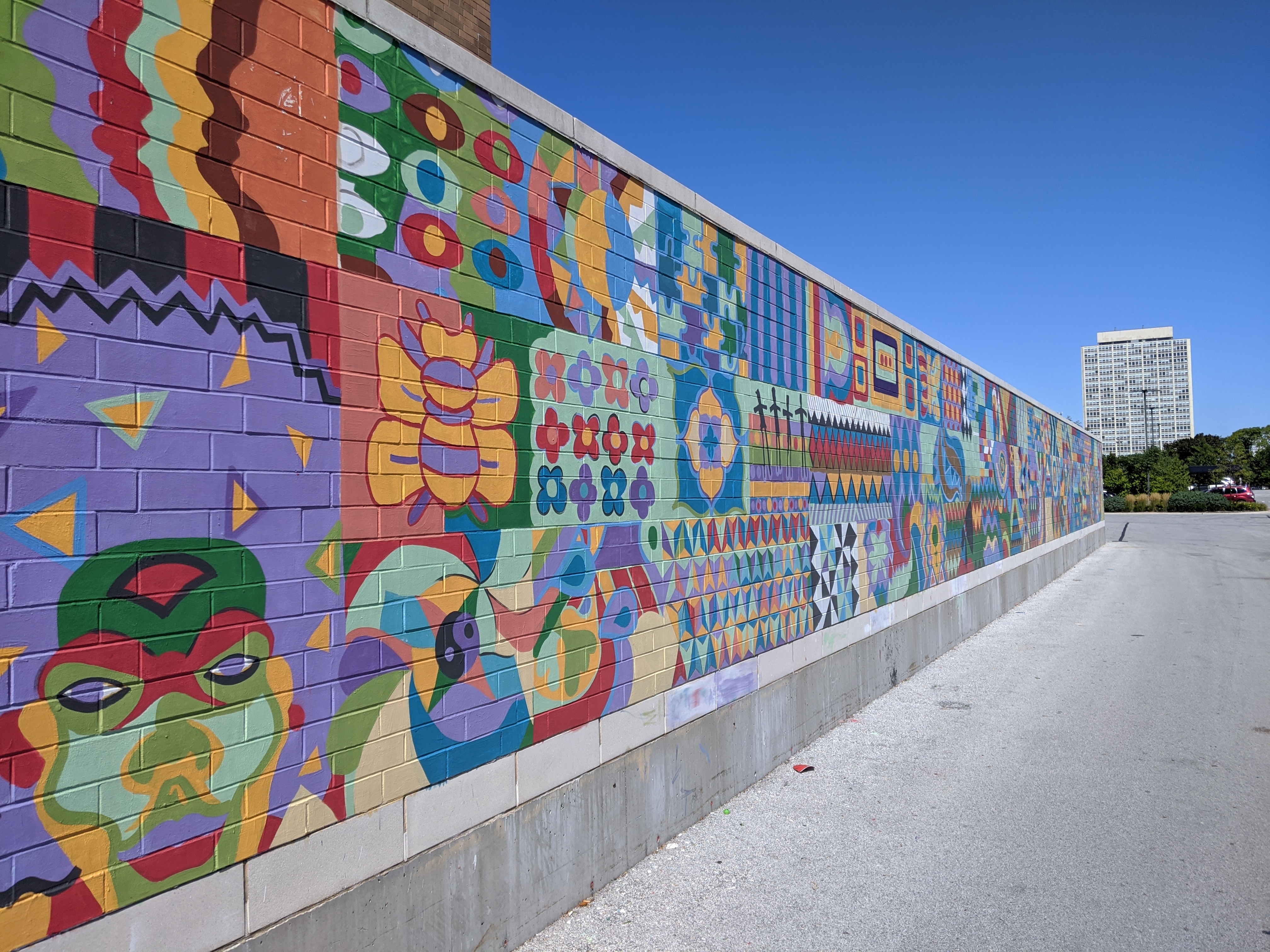
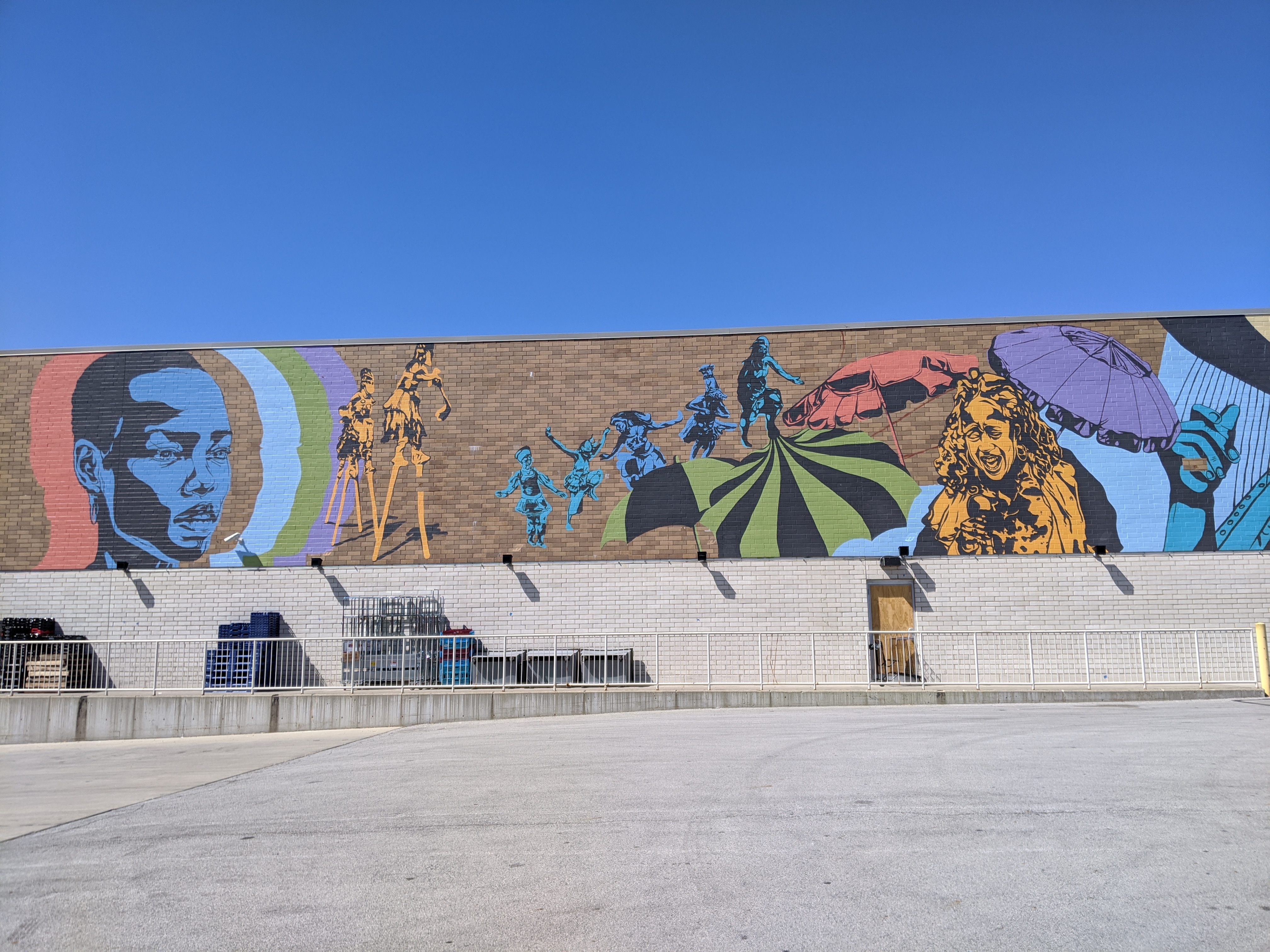
Finally, as we approach the end of our walking tour, we come to one of the newest murals to join Bronzeville. ‘Color Me South Side’ by previously little-known artist Dorian Sylvian has been designed to incorporate the areas history and has been contributed to by the community. When the mural is complete it will feature prominent local figures including Jazz composer & trumpeter Louis Armstrong, Nat King Cole, an African American singer and jazz pianist and Lorraine Hansberry, best known for her song ‘A Raisin In The Sun’, which highlighted the poverty African Americans were living in under racial segregation in Chicago.
Overall, I feel that Bronzeville is a neighborhood undergoing significant change. Over the last 2 decades, it has started to take pride in its rich history, and with its population diversifying, it is becoming a new center of African American culture. Many steps have been taken to retain the areas rich history, including the creation of the black metropolis and tourism council to revive historic buildings that were previously in states of disrepair, so future generations can be inspired by the achievements of their ancestors towards an equal United States. I would argue that Bronzeville is becoming a symbol of a new south side, one with a clear identity and a prosperous future.